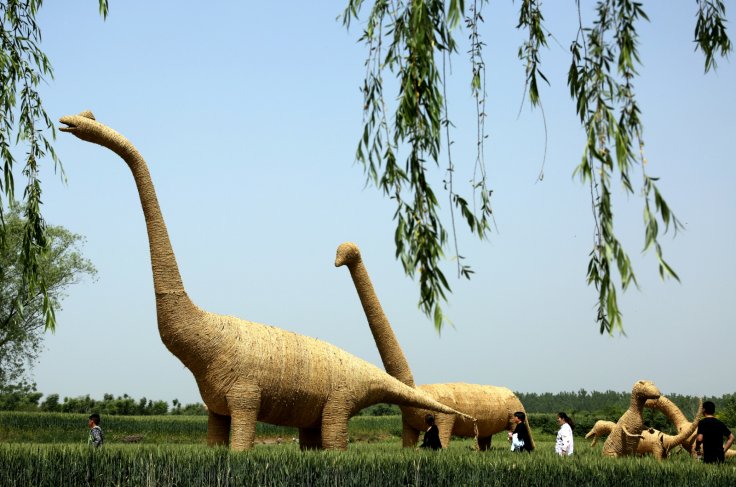
In a milestone breakthrough, researchers at the University of Kent have mapped out the genetic code of dinosaurs by studying the DNA of their closest living relatives like birds and turtles. The study helped researchers to unravel the mysteries behind dinosaurs' long dominance in the earth as the strongest species.
As per the new study, it was the increased number of chromosomes in the DNA of dinosaurs which helped them to remain the most dominant creature on the earth for more than 200 million years. Due to this increase in the number of chromosomes, dinosaurs varied in sizes, and it also helped them to evolve more quickly.
"We think it generates variation. Having a lot of chromosomes enables dinosaurs to shuffle their genes around much more than other types of animals. This shuffling means that dinosaurs can evolve more quickly and so help them survive so long as the planet changed," said Professor Darren Griffin, the researcher who led this study, BBC reports.
During the research, scientists found that birds which are considered the close relatives of dinosaurs are actually dinosaurs itself.
"The fossil evidence and now our evidence reinforces the idea that rather than birds and dinosaurs being distant relatives, they are one in the same. The birds around us today are dinosaurs," said Dr Rebecca O'Connor, from the University of Kent.
However, Jurassic Park fans cannot rejoice much, as the idea of recreating dinosaurs using DNA samples is practically impossible as per current technologies.
Scientists revealed that genetic materials degrade over time, and the world record survival of an ancient DNA is just one million years. It should be noted that dinosaurs roamed on the surface of earth around 60 million years ago, and as a result, it is quite an unassailable task to bring back the dangerous T-Rex to the 21st century.
"We are not going to have Jurassic Park anytime soon. If you take the DNA of a chicken and put it into an ostrich egg you won't end up with a chicken or an ostrich. You will end up with nothing. The same would be true of a velociraptor or a T. rex. It just wouldn't work," added Griffin.
Earlier it was reported that a team of researchers at the Harvard University are planning to clone woolly mammoths that went extinct 10,000 years ago. It was also revealed that researchers are apparently planning to create a 20,000-hectare Ice Age Park in remote Siberia to grow these pre-historic giants.









